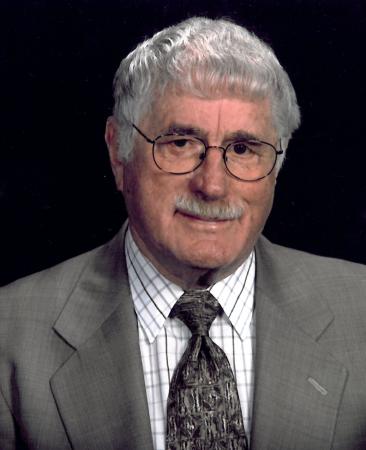Neil Twelker ’38
Neil Twelker’s family moved from California to Ballard when he was 9 years old. He remained centered in Ballard until his death in 2006.
Wall of Recognition Inductee: 2011
 Neil graduated from Ballard High School in 1938 and earned his B.S. in Civil Engineering from the University of Washington in 1942. After three years teaching at UW, he joined the Army Corps of Engineers. In his nine years with the Corps, he was responsible for soil engineering on projects including the Chief Joseph Dam, still one of the largest earthen structures ever built.
Neil graduated from Ballard High School in 1938 and earned his B.S. in Civil Engineering from the University of Washington in 1942. After three years teaching at UW, he joined the Army Corps of Engineers. In his nine years with the Corps, he was responsible for soil engineering on projects including the Chief Joseph Dam, still one of the largest earthen structures ever built.
From 1953 to 1956 Neil worked on the largest caisson ever sunk on the North American continent, in the Saint Lawrence Seaway, as well as on military airfields in New England and the Rance River Tidal Power Dam in St. Malo, France. The following two years, spent with Shannon and Wilson in Seattle, he worked on the Wells Dam on the Columbia River, the Tolt River Dam, Upper Baker River Dam, slope stability investigations for open pit copper mines, and much more. Along the way, he earned his A.M in Soil Mechanics and Ph.D. in Soil Mechanics with a minor in Geology, both from Harvard University, in 1954 and 1958.
The ensuing forty one years saw Neil engaged in over 6500 professional assignments in Washington, Oregon, and Alaska, including soils and foundation management for buildings, bridges, roads, dams, and breakwaters. He worked on design and construction of tunnels, deep trenches, and caissons; residential, commercial, and industrial structures of all sizes; and landslide repair projects. Around Seattle, Neil’s projects included the Crown Plaza Hotel, Westin Building, Fourth and Blanchard Building, Warwick Hotel, Market Place North, Seattle Aquarium, Museum of Flight, Restoration of Pike Place Market, the Sedgwick James Building (the “Darth Vader Building”) the stabilization and construction of the entire Inverness neighborhood, and many other projects. He was also involved in the construction of much of downtown Portland.
Neil was known for trying – and succeeding with – new ideas, such as the “hanging grade beam,” which prevented mudslides by laying concrete beams to follow the slope of the soil surface instead of building on piles driven deep into the soil.
Neil was a compassionate and caring person who loved his family, animals, sports, sailing, language – and especially music. Avid opera lovers, he and his wife belonged to The Seattle Opera Guild Artist Aid program. He played the bass viola in the Ballard High School orchestra and was proud to see his Alaskan grandsons following in his footsteps, playing the violin in the Juneau High School orchestra.
In his last years, Neil was a leader in proposing that the Alaskan Way Viaduct could be saved by retrofitting. He never gave up his lifelong dedication to trying to solve engineering problems in an efficient and sensible way, at a reasonable cost – for any and all of us.
